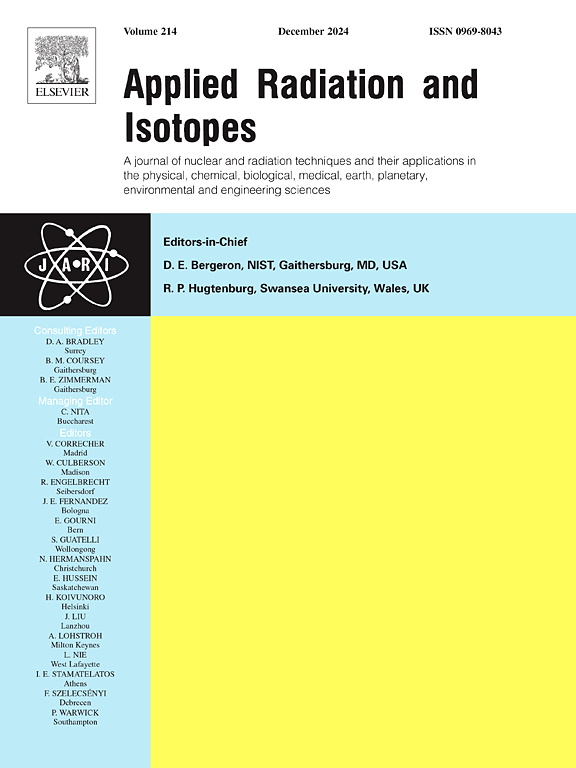Enhancement on the charge collection property of the 3D positive ion detector
IF 1.6
3区 工程技术
Q3 CHEMISTRY, INORGANIC & NUCLEAR
引用次数: 0
Abstract
This study focuses on enhancing the charge collection efficiency of 3D positive ion detector, which plays a vital role in radiation biology, dosimetry, protection, and measurement. Conventionally, highly resistive glass and fluorine doped tin oxide/gold-coated ceramic glass cathodes have been employed, yielding charge collections in the picocoulomb (pC) to nanocoulomb (nC) range. However, the introduction of metal oxide/metal-coated cathodes has significantly improved charge collection, increasing electron counts from 108 to 1010. Building upon this progress, our research explores the use of oxygen-free high conductivity (OFHC) copper cathode, resulting in a substantial enhancement of charge collection to the microcoulomb (μC) range and electron counts reaching 1013. This study also examines the relationship between electron mobility, drift velocity, and charge collection under varying pressure conditions. The results reveal a linear increase in electron mobility with pressure, while drift velocity remains stable, dominated by the applied electric field. The stability of drift velocity and consistent charge collection performance across pressure variations highlight the detector's reliability, offering valuable insights into electron transport behavior in particle detection systems.
三维正离子探测器电荷收集性能的增强
提高三维正离子探测器的电荷收集效率,在辐射生物学、剂量学、防护和测量等领域具有重要作用。传统上,高电阻玻璃和氟掺杂氧化锡/镀金陶瓷玻璃阴极已被采用,产生的电荷收集在皮库仑(pC)到纳库仑(nC)范围内。然而,金属氧化物/金属涂层阴极的引入显著改善了电荷收集,将电子计数从108增加到1010。在此基础上,我们的研究探索了无氧高导电性(OFHC)铜阴极的使用,从而大大提高了电荷收集到微库仑(μC)范围,电子计数达到1013。本研究还探讨了在不同压力条件下电子迁移率、漂移速度和电荷收集之间的关系。结果表明,电子迁移率随压力线性增加,而漂移速度在外加电场的作用下保持稳定。漂移速度的稳定性和跨压力变化的一致电荷收集性能突出了探测器的可靠性,为粒子检测系统中的电子传输行为提供了有价值的见解。
本文章由计算机程序翻译,如有差异,请以英文原文为准。
求助全文
约1分钟内获得全文
求助全文
来源期刊

Applied Radiation and Isotopes
工程技术-核科学技术
CiteScore
3.00
自引率
12.50%
发文量
406
审稿时长
13.5 months
期刊介绍:
Applied Radiation and Isotopes provides a high quality medium for the publication of substantial, original and scientific and technological papers on the development and peaceful application of nuclear, radiation and radionuclide techniques in chemistry, physics, biochemistry, biology, medicine, security, engineering and in the earth, planetary and environmental sciences, all including dosimetry. Nuclear techniques are defined in the broadest sense and both experimental and theoretical papers are welcome. They include the development and use of α- and β-particles, X-rays and γ-rays, neutrons and other nuclear particles and radiations from all sources, including radionuclides, synchrotron sources, cyclotrons and reactors and from the natural environment.
The journal aims to publish papers with significance to an international audience, containing substantial novelty and scientific impact. The Editors reserve the rights to reject, with or without external review, papers that do not meet these criteria.
Papers dealing with radiation processing, i.e., where radiation is used to bring about a biological, chemical or physical change in a material, should be directed to our sister journal Radiation Physics and Chemistry.
 求助内容:
求助内容: 应助结果提醒方式:
应助结果提醒方式:


